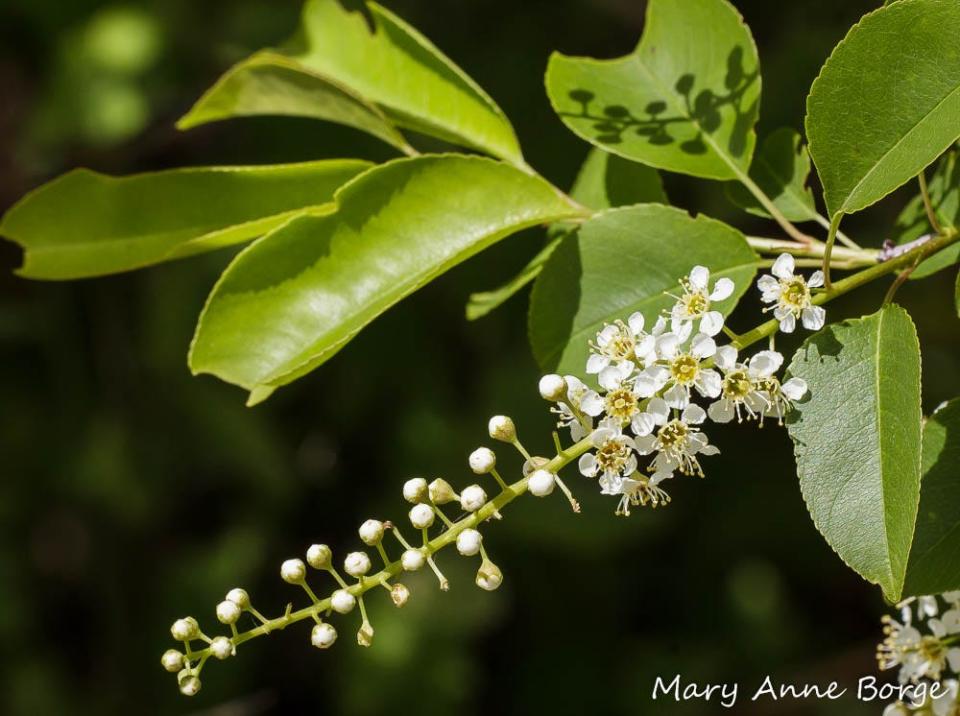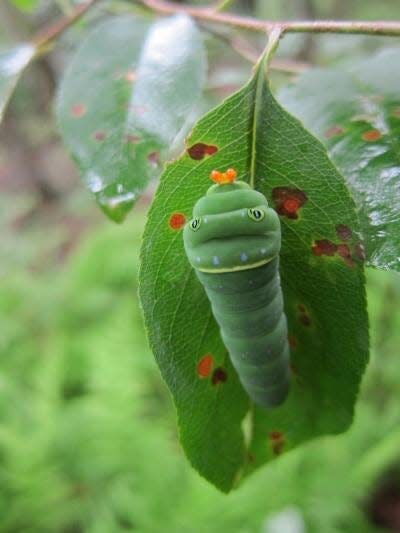Make birds happy by planting a black cherry tree in your yard | Legare

If you want to nurture birds in your yard, you cannot go wrong by planting a black cherry tree (Prunus serotina). It is considered a keystone species, which means it has a disproportionately large effect on the abundance and diversity of other species, like insects, in an ecosystem.
There are 247 species of caterpillars that feed on plants in the Prunus genus in my Tallahassee zip code. Entomologist, ecologist, and author Doug Tallamy considers black cherry and other native Prunus species as his number two pick of ecological gold in the landscape, with oaks rated number one.
Visit National Wildlife Federation’s Plant Finder and type in your zip code to find out what native plants nurture the most caterpillars in your area.
You may wonder why I am writing about caterpillars when this article is supposed to be about attracting birds.

Let us look at one species – the Cecropia Moth. An individual female lays up to 300 eggs on its host plants of mainly black cherry, birch, or maple. Of those 300 caterpillars that hatch from these eggs, how many live to reproduce as a moth? Only two or three!
What happens to all the others?
They are consumed as high-quality protein by spiders, lizards, wasps, and yes, birds – a complex food web with a native plant at its base. These caterpillars are produced when the leaves are young and tender, a time when birds are busy searching for insects, primarily caterpillars, to feed their young.
There are butterflies such as the Eastern Tiger Swallowtail and Red-spotted Purple that are associated with black cherry, but moth species produce a good many more caterpillars. One that comes to mind are tent caterpillars which are highly attractive to Yellow-billed Cuckoos.

 Yahoo Autos
Yahoo Autos 